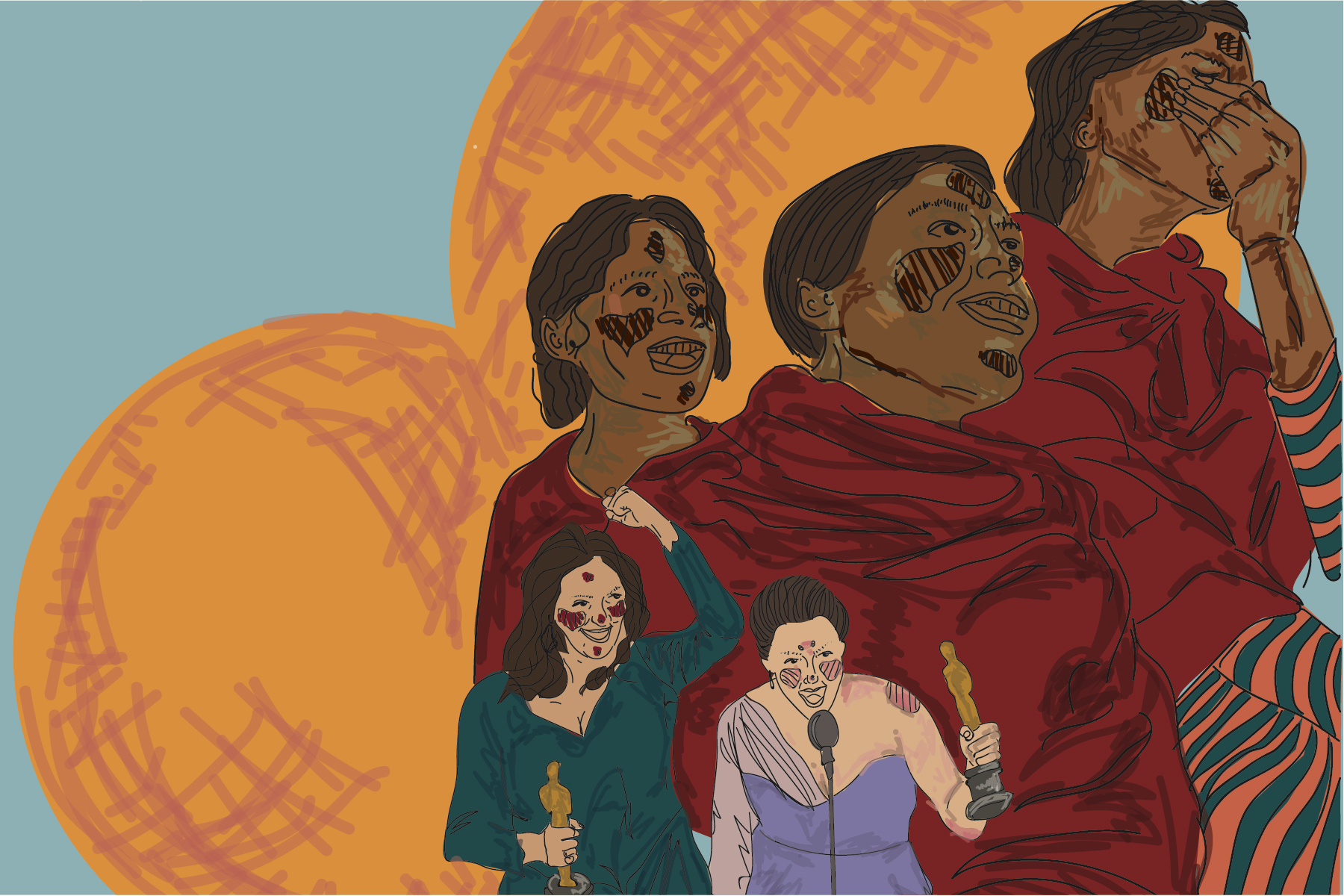Initiated by a group of students from Oakland, California, The Pad Project is a nonprofit initiative striving to raise awareness for the gender gap in education in developing countries. Their documentary short, “Period. End of Sentence.,” calls out the injustice women face in maintaining their education, as well as a stable income, because of menstruation — a natural and inevitable biological process.
The Academy Award-winning documentary short film, “Period. End of Sentence.” features the story of the women of Hapur, India, working vehemently to pursue their dreams — starting with the obliteration of the menstruation taboo. In India, it is completely (and sadly) normal to observe millions of school-aged girls drop out of their classes around the ages of 11 – 15 because of the start of their periods.
India has such a drastic shortage of sanitary pads that young girls will turn to any type of absorbent material to stop the menstrual blood from damaging their clothing. Some alternatives they resort to include ash, leaves or just any type of cloth they can attain (oftentimes, fabrics that are neither clean nor sanitary). The unsanitary nature of these makeshift sanitary pads consequently increases their risk of contracting an infection, thus keeping them out of school for longer.
The solution to their problem comes in the form of an ironclad pad-making machine, invented by Muruganantham. This machine not only creates a sanitary and biodegradable alternative to the normal clothes the young women of Hapur resort to, but it also creates a self-sufficient labor initiative that these women can participate in within their own economy and boost financial independence.
“Period. End of Sentence.” informs those who already have easier access to education of the inequity between male and female attendance in the education system of lesser-developed nations. Furthermore, the short film is meant to inspire people to use their resources to advocate for the rights of women whose voices remain unheard.
For those with the desire to support women’s education and help bridge the gap between male and female attendance in schools, consider supporting these five organizations.
1. The Pad Project
The Oakland student-run organization responsible for the documentary “Period. End of Sentence.” is relatively new to the girls’ education advocacy community.
Nevertheless, The Pad Project is distinct in its allocation of funds. The donations collected through this organization go toward building more of these aforementioned “pad-making machines” to create a force of women both wanting to pursue an education and work toward further autonomy.
2. Malala Fund
Founded by Pakistani female education activist Malala Yousafzai, this international nonprofit organization raises funds that go to the following nations in need of support: Afghanistan, Brazil, India, Nigeria, Pakistan and Syria. The donations distributed to each respective nation go toward enterprises that deal with the needs of each region. For example, while Afghanistan has a higher demand for female educators, Nigeria struggles with girls’ retention in the schooling system under the peril of the militant Islamic group Boko Haram.
Regardless of each region’s situation, the donation money raised through the Malala Fund go toward advancing women’s education and providing the support women in these countries need in order to attain scholarship.
3. Girl Up
This United Nations Foundation works on empowering girls from various communities, including developing and developed nations. Their mission statement focuses on girls’ leadership that strives toward social advocacy of gender equality around the world.
Girls and women who are interested in Girl Up’s values and seek further involvement in the foundation’s cause can establish leadership within their own communities and campuses by founding chapters where they can host fundraisers, give informative talks educating the public about equality and attend informative conferences where young women can learn of the issues that women face internationally.
4. Central Asia Institute
The Central Asia Institute is an international nonprofit organization working to advocate for children’s education in Afghanistan, Pakistan and Tajikistan. Specifically, the Central Asia Institute focuses on the empowerment of girls and women in education to become future leaders within their communities, and, more ambitiously, nations.
Donations to the organization go toward several divergent projects, with a focus on the development of an educational division that will build schools, disburse scholarships, construct women’s literacy centers and set up public health services.
Those looking to support the Central Asia Institute’s initiatives can either donate through their website or maximize involvement through a Pennies for Peace campaign, in which supporters fundraise for peace and education by organized events.
5. Student Leadership Network
For those looking to aid in the accessibility of education on a more local scale, the Student Leadership Network supports students from low-income communities within the United States.
Urging the value of education for all, the Student Leadership Network maintains several programs that aim to support women through leadership schools, providing a single-sex education opportunity for those coming from first-generation immigrant and low-income backgrounds. Additionally, they host a gender-inclusive College Bound Initiative, which works to place college guidance experts in high schools to provide more assistance with the college application process.
Those looking to get involved can become a volunteer, donate or advocate for increased opportunities for underrepresented students.
In first-world nations like the United States, it can understandably be difficult to imagine a life where secondary education is unattainable. Furthermore, in the United States, it is atypical to observe a disparity between women and men in secondary education, as students tend to see a relatively equal proportion of both male and female classmates simply by scanning a classroom.
In regions such as India, Pakistan and Sub-Saharan Africa however, education is not readily available to all and is often attained through privileged circumstances, i.e. being male. The cultures of these locations are vastly different from their Westernized counterparts in how they define the societal gender role for women.
Often, women from developing countries are expected to fill only the roles of the wife and the mother, the cook and the seamstress, the quiet and the obedient. However, times are changing, and women are too.
Women are beginning to challenge their position in society, realizing their inherent potential to be a leader of themselves, their communities and the world. Most fitting to describe the nature of women are those of pad-making machine inventor, Muruganantham: “The strongest creature on earth is not the elephant, not the tiger, but the girl.”
Period. End of sentence.
















